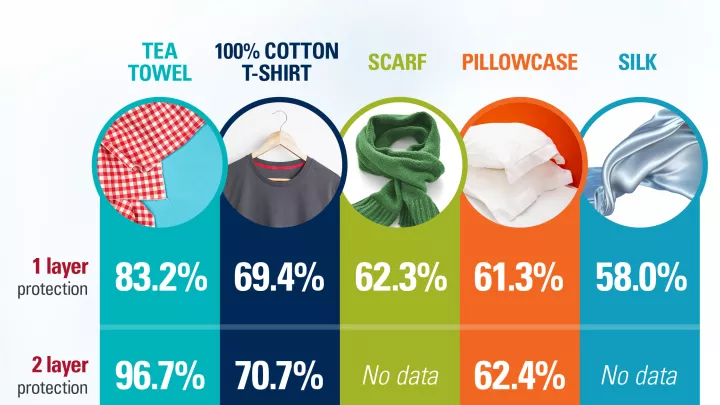Myth 1: Masks are harmful to your health (False)
The facts:
There are many concerns that wearing masks may be harmful to your health, but this is not based in fact.
The masks we recommend are basic procedure or fabric masks. These masks are not tight fitting and allow airflow, while still protecting others from respiratory droplets.
Just as oxygen can get in, carbon dioxide can get out. So accumulation of carbon dioxide is not a direct concern.
Although these masks are new to most in our community, they are common in the health care setting. Because of this, we have years of experience with them, and are certain they are safe to wear.
Myth 2: Masks only help if someone has symptoms (False)
The facts:
Coughing and sneezing do create very high risk situations, but talking, yelling, exercising and singing can also spread infected respiratory droplets. Any time inhaling and exhaling occur, there is potential to spread the virus. Because of this, we continue to encourage people to wear masks.
Masks help us prevent infection in several ways:
- You may have COVID-19 without knowing. We know it’s possible for people to carry the virus without having symptoms. By wearing a mask, you can prevent accidental spread
- Wearing a mask also helps protect you by preventing infection. If someone else is not masked and spreads infected droplets into the air, the mask serves as a barrier that limits the likelihood that you will breathe in those droplets and become infected
- Touching your face with unwashed hands (or even gloves), could get the live virus in your eyes, mouth or nose. Depending on the amount of virus on your hands, this can cause infection. Masks provide a barrier to at least the mouth and nose
Myth 3: Masks cause self contamination (True and false)
The facts:
In truth, this is a both myth and fact. Here’s why: Masks can become contaminated on the outside surface, from the droplets mentioned above.
If you do not handle your mask safely, and use great hand hygiene before and after touching it, you could contaminate yourself by getting virus off the mask, onto your hands, and into your eyes, nose or mouth. This is why washing cloth masks or replacing disposable masks is so important.
However, the idea that wearing a mask after you’ve been exposed to COVID-19 will increase your level of infection, is a myth. There is no evidence to support this self contamination claim.




